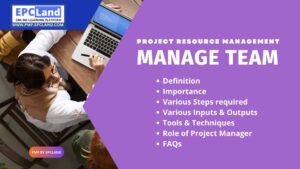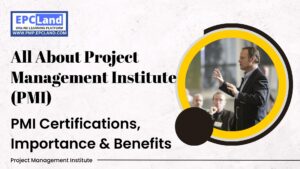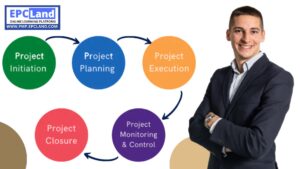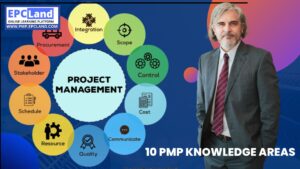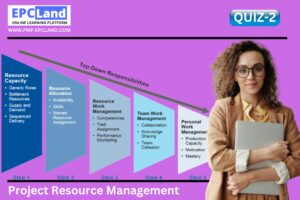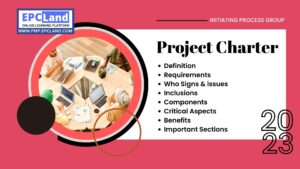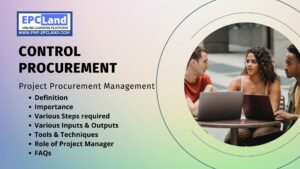Estimating activity resources is a crucial aspect of project resource management. By accurately determining the resources required for each project activity, project managers can ensure efficient use of resources and minimize waste. This not only saves time and money, but also helps to deliver high-quality results that meet project goals and expectations. In this guide, we will explore the best practices for estimating activity resources, including tips for defining project requirements, identifying available resources, and using tools and techniques to make accurate resource estimates. Whether you are a seasoned project manager or just starting out, this guide will provide you with the knowledge and skills you need to succeed in project resource management.
What is the Importance of “Estimate Activity Resources” in Project Resource Management
Estimating activity resources is important in project resource management because it:
- Helps allocate resources effectively: By accurately estimating the resources needed for each project activity, project managers can ensure that resources are used effectively and efficiently, reducing waste and increasing productivity.
- Facilitates better planning: Accurate resource estimates allow project managers to create realistic project plans that take into account the resources needed to complete each task. This helps to minimize surprises and keeps projects on track.
- Improves project quality: Proper resource allocation can help to ensure that each project activity is completed to the highest standards, resulting in a high-quality project outcome.
- Supports budget control: By estimating resources upfront, project managers can better control project costs, reducing the risk of overspending and ensuring that projects are completed within budget.
- Enhances stakeholder satisfaction: Accurate resource estimation helps to ensure that projects are delivered on time and within budget, increasing stakeholder satisfaction and building trust in the project management process.
Attempt Quiz-1 on Estimate Activity Resources Process
What are the Various Steps required in “Estimate Activity Resources” in Project Resource Management
The steps required to estimate activity resources in project management include:
- Define project requirements: Clearly understand what is required from the project and what resources will be needed to complete each activity.
- Identify available resources: Determine what resources are available for the project, including personnel, equipment, and materials.
- Create a resource breakdown structure: Break down each project activity into smaller, more manageable components, and identify the resources needed for each.
- Determine resource allocation: Assign resources to each project activity, taking into account any constraints, such as resource availability or budget restrictions.
- Use estimation techniques: Use a variety of estimation techniques, such as expert judgment, analogous estimation, and parametric estimation, to determine resource requirements for each activity.
- Validate and refine estimates: Review and refine the resource estimates, seeking input from relevant stakeholders and making any necessary adjustments.
- Monitor and control resources: Continuously monitor resource usage and make adjustments as needed to ensure that the project stays on track.
What are various Tools & Techniques used for “Estimate Activity Resources” in Project Resource Management
There are various tools and techniques used for estimating activity resources in project management, including:
- Expert judgment: Seeking input from individuals with expertise in the relevant area to help determine resource requirements.
- Analogous estimation: Using information from previous similar projects to estimate resources for the current project.
- Bottom-up estimation: Breaking down each project activity into smaller components and estimating resources for each individually.
- Three-point estimation: Creating a range of estimates based on best-case, most likely, and worst-case scenarios.
- Parametric estimation: Using statistical models to estimate resources based on historical data or relationships between variables.
- Computerized tools: Using project management software or specialized resource estimation tools to automate the estimation process.
- Historical information: Examining data from previous projects to determine resource usage patterns and make informed resource estimates.
What are various Inputs required for “Estimate Activity Resources” in Project Resource Management
The various inputs required for estimating activity resources in project management include:
- Project scope statement: Detailed information about the project, including its goals, objectives, and deliverables.
- Activity list: A list of all the activities that must be completed to achieve the project’s goals.
- Activity attributes: Information about each activity, such as duration, predecessor, and resource requirements.
- Resource calendars: Information about the availability of personnel, equipment, and other resources.
- Organizational process assets: Company-specific guidelines and procedures for estimating resources.
- Historical information: Data from previous projects, including resource usage and cost information, can be used to inform resource estimates.
- Agreements: Contracts or agreements with suppliers or vendors that may affect resource availability.
What are various Outputs required for “Estimate Activity Resources” in Project Resource Management
The various outputs of the “Estimate Activity Resources” process in project management include:
- Activity resource requirements: A detailed description of the resources needed for each project activity, including personnel, equipment, and materials.
- Resource breakdown structure: A hierarchical representation of resources and their relationships, showing how they are allocated to specific project activities.
- Resource calendars: An updated resource calendar that reflects the availability of personnel and equipment over the course of the project.
- Budget: A detailed budget that includes all project costs, including personnel, equipment, and material costs.
- Project documents updates: Updates to project management documents, such as the project scope statement, activity list, and activity attributes.
- Resource histograms: Graphical representations of resource utilization over the course of the project, showing resource availability and allocation.
What is Role of Project Manager in “Estimate Activity Resources” in Project Resource Management
The project manager plays a critical role in the “Estimate Activity Resources” process in project management, as the project manager is responsible for:
- Leading the resource estimation process: The project manager is responsible for overseeing the resource estimation process and ensuring that it is completed on time and within budget.
- Gathering input: The project manager is responsible for gathering input from stakeholders and using that input to inform resource estimates.
- Selecting tools and techniques: The project manager must select the most appropriate tools and techniques for estimating resources, taking into account the specific needs and constraints of the project.
- Communicating with stakeholders: The project manager must communicate with stakeholders, including team members, stakeholders, and customers, to ensure that everyone is aware of resource requirements and availability.
- Monitoring resource usage: The project manager must monitor resource usage throughout the project, making adjustments as necessary to ensure that resources are being used effectively.
Attempt Quiz-2 on Estimate Activity Resources Process
Final Takeaway on “Estimate Activity Resources” in Project Resource Management
The “Estimate Activity Resources” process is critical to the success of any project in project management. By accurately estimating resources and allocating them effectively, project managers can ensure that projects are completed on time, within budget, and to the satisfaction of stakeholders. The project manager plays a crucial role in this process, leading the resource estimation effort, communicating with stakeholders, and monitoring resource usage. By using a combination of tools and techniques, including expert judgment, analogous estimation, bottom-up estimation, three-point estimation, and historical information, project managers can make informed resource estimates that support project success.
FAQs on “Estimate Activity Resources” in Project Resource Management
- What is “Estimate Activity Resources”?
- Estimate Activity Resources is a process in project management that involves determining the resources (personnel, equipment, materials) required to complete project activities.
- Why is “Estimate Activity Resources” important?
- Accurately estimating resources helps project managers allocate resources effectively, reducing the risk of project delays or overspending.
- What inputs are required for “Estimate Activity Resources”?
- The project scope statement, activity list, activity attributes, resource calendars, historical information, organizational process assets, and agreements.
- What outputs are produced during “Estimate Activity Resources”?
- Activity resource requirements, resource breakdown structure, resource calendars, budget, updated project documents, and resource histograms.
- What is the role of the project manager in “Estimate Activity Resources”?
- Lead the resource estimation process, gather input, select tools and techniques, communicate with stakeholders, and monitor resource usage.
- What tools and techniques can be used for “Estimate Activity Resources”?
- Expert judgment, analogous estimation, bottom-up estimation, three-point estimation, and historical information.
- How can resource estimates be improved?
- By using a combination of tools and techniques, gathering input from stakeholders, and continuously monitoring and adjusting resource usage during the project.



